Constable of the Tower

The Constable of the Tower is the most senior appointment at the Tower of London. In the Middle Ages a constable was the person in charge of a castle when the owner – the king or a nobleman – was not in residence. The Constable of the Tower had a unique importance as the person in charge of the principal fortress defending the capital city of England.
Today the role of Constable is a ceremonial one and mainly involves taking part in traditional ceremonies within the Tower as well as being part of the community that lives within its perimeter.
Under the Queen's Regulations for the Army, the office of Constable is conferred upon a field marshal or a retired general officer for a five-year term.[1]
At the conclusion of the Constable's Installation ceremony, the Lord Chamberlain symbolically hands over the Queen’s House to the Constable. He in turn entrusts it to the Resident Governor, who is responsible for the day-to-day running of Her Majesty’s Palace and Fortress, the Tower of London.
History
The office of Constable of the Tower is one of the oldest in England, dating back to within a few years of the Conquest, and has always been one of great honour and dignity. In the past, this appointment has been held by eminent prelates of the Church, prominent politicians and distinguished soldiers. The first Constable, Geoffrey de Mandeville was appointed by William the Conqueror (AD 1066-87) in the 11th century. Formerly, in the absence of the Sovereign, the Constable would have been among the most powerful men in London. Today the Constable retains the right of direct access to the Sovereign. Since 1784 the Constable has always been a senior military officer.
During the medieval period the Constable ran the Tower which included building maintenance, soldiers' pay and, as the Royal menagerie was housed in the Tower, supervision of the 'Keeper of the King’s Animals'. He was also ultimately responsible for the prisoners kept there. The first known prisoner was the Norman bishop Ranulf Flambard in 1100, and the London gangsters Ronnie and Reggie Kray were the last official prisoners, for a few days in 1952, for refusing to do their National Service. They were sent to the Tower as it was the barracks of the 1st Battalion Royal Fusiliers (City of London Regiment) to which they had been assigned.
The Constable’s responsibility for prisoners was made clear in the words with which he was entrusted with them: “You are to guard them securely in the prison of our said tower in such a way that you shall answer for them body for body ... Fail in no part of this on pain of forfeiture of life and limb and all property you hold in our realms.”
Until the expulsion of the Jews in 1290, the Constable was responsible for the regulation of London's Jewry.
Constable's dues
In the Middle Ages it was a profitable position; among the Constable’s entitlements were:
- any horses, oxen, pigs or sheep that fell off London Bridge
- any cart that fell into the Tower moat
- all herbage growing on Tower Hill
- 6/8d (six shillings and eight pence) annually from each boat fishing between the Tower and the sea
- 1s (1 shilling) a year from all ships carrying herring to London
- 2d (2 pence) from each pilgrim who came to London, by sea, to worship at the shrine of St James
- all swans swimming under London Bridge.
Every ship that came upstream to London had to moor at Tower Wharf to give a portion of its cargo to the Constable, as payment for the protection afforded by the Tower's cannon. These dues included oysters, mussels, cockles, rushes, and wine. The tradition is still maintained today by the Royal Navy, at the annual Ceremony of the Constable's Dues, when one large vessel presents the Constable with a barrel of rum.[2]
Since 1784 the tradition has been for the Constable to be a senior military officer, usually a general officer. Perhaps the most famousConstable was Arthur Wellesley, 1st Duke of Wellington, who served from 1825 to 1852. During his tenure, the royal menagerie and record office were removed and many buildings were restored to their medieval state. The moat was drained and converted into a parade ground. Yeomen Warders were no longer permitted to buy and sell their places but were to be drawn only from sergeants in the Army. To His Grace's displeasure, tourism at the Tower increased during his Constableship.
Each Constable is now appointed for five years. The new Constable is handed the keys as a symbol of office. On state occasions the Constable has custody of the crown and other royal jewels.
List of Constables
This is an incomplete list of people who have served as Constable of the Tower of London, a post traditionally combined with that of Lord Lieutenant of the Tower Hamlets.
| Portrait | Name | From | To | Note |
|---|---|---|---|---|
| Geoffrey de Mandeville | 1068 (?) | First Constable, appointed by William the Conqueror[3][4] | ||
| William de Mandeville | 1100 | 1116 (?) | Son of Geoffrey de Mandeville, held Ranulf Flambard | |
| Geoffrey de Mandeville, 1st Earl of Essex | 1140 | 1144 (d.) | Son of William de Mandeville | |
| no record of Constables during reign of Stephen, 1144-1153[4] | ||||
| Richard de Lucie | 1153 | 1179 (d.) | also Chief Justiciar | |
| Garnier de Isenei | ||||
| William Longchamp | 1189 | Bishop of Ely, Chancellor and Regent | ||
| William Puintellus | 1189 | Sub-Constable | ||
| Walter of Coutances | 1191 | Bishop of Rouen | ||
| Roger Fitz Renfred | 1194 | brother of Walter of Coutances | ||
| Geoffrey Fitz Peter | 1198 | Chief Justiciar; created Earl of Essex, 1199 | ||
| Roger de la Dune | 1205 | |||
| Geoffrey FitzGeoffrey de Mandeville | October 1213 | Son of Geoffrey FitzPeter | ||
| William de Cornhill | November 1213 | Archdeacon of Huntingdon | ||
| Eustace de Greinville | 1214 | |||
| Stephen Langton | June 1215 | Archbishop of Canterbury | ||
| Tower occupied by Prince Louis of France | June 1216 | |||
| Walter de Verdun | 1217 | |||
| Stephen de Seagrave | 1220 | Chief Justiciar | ||
| Hugh de Wyndlesore | 1224 | |||
| John de Boville and Thomas de Blumvill or Blundeville (probably together) | 1225 | Blundeville was Bishop of Norwich, 1226. | ||
| Henry Fitz Aucher | 1227 | |||
| Ralph de Gatel | 1230 | |||
| Hubert de Burgh, Earl of Kent | July 1232 | |||
| Ralph de Ralegh | 1232 | Sub-Constable | ||
| William de St. Edmund | 1233 | |||
| Hugh Giffard | 1234 | |||
| Geoffrey de Crancumb | March 1235 | |||
| Hugh Giffard (again) | April 1236 | |||
| Walter de Gray, Archbishop of York and Bertram de Crioyl or Criolle (jointly) | 1241 | |||
| Peter de Vallibus | 1244 | |||
| John de Plessetis | June 1244 | |||
| Peter le Blund | 1246 | |||
| Aymon Thorimbergh | September 1256 | |||
| Imbert Pugeys | 1257 | |||
| Hugh Bigod | 1258 | Chief Justiciar | ||
| Richard de Culwurth | 1261 | |||
| Sir John Mansel or Maunsel | May 1261 | |||
| Richard de Tilbury | 1261 | |||
| Hugh le Despencer | 1262 | Chief Justiciar, killed at Evesham, 4 August 1265 | ||
| Roger de Leyburn | 1265 | |||
| Hugh Fitz Otho | October 1265 | |||
| John Walerand and John de la Lynde (jointly) | November 1265 | |||
| Alan la Zouche | 1265 | |||
| Thomas de Ippegrave | April 1268 | |||
| Stephen de Eddeville | July 1268 | |||
| Hugh Fitz Otho (again) | 1269 | |||
| Walter Giffard | 1272 | Archbishop of York | ||
| John de Burgh | December 1273 | |||
| Philip Basset | 1274 | |||
| Anthony de Bec | 1275 | Bishop of Durham | ||
| Richard de Waldegrave | June 1280 | Sub-Constable | ||
| Ralph de Dacre | 1283 | |||
| Ralph de Sandwich | September 1285 | |||
| Ralph Berners | February 1289 | |||
| Ralph de Sandwich (again) | July 1289 | |||
| John de Cromwell, 1st Baron Cromwell | March 1308 | |||
| Roger de Swynnerton | 1321 | |||
| Stephen de Segrave | February 1323 | |||
| Walter de Stapledon | 1323 | Bishop of Exeter | ||
| John de Weston | November 1323 | |||
| John de Gisors and Richard de Betoigne (jointly) | November 1326 | |||
| Thomas Wake, 2nd Baron Wake of Liddell | December 1326 | |||
| John de Cromwell, 1st Baron Cromwell (again) | March 1327 | |||
| William, Baron la Zouche, of Mortimer | June 1328 | |||
| John de Cromwell, 1st Baron Cromwell (again) | 1329 | |||
| Nicholas de la Beche | October 1335 | |||
| Robert de Dalton | 1341 | |||
| John, Baron Darcy (of Knaith) | March 1346 | 1347 (d.) | ||
| John, Baron Darcy (son) | June 1347 | |||
| Bartholomew de Burghersh, 1st Baron Burghersh | 1355 | August 1355 (d.) | ||
| Robert de Morley, 2nd Baron Morley | 1355 | |||
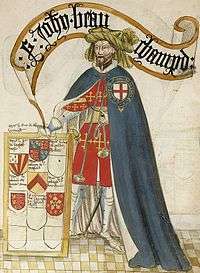 | John de Beauchamp, 1st Baron Beauchamp de Warwick | |||
| Richard de la Vache | 1361 | |||
| Sir Aleyne de Boxhull | 1366 | broke Westminster Abbey's sanctuary 1378 | ||
| Sir Thomas Murrieux | December 1381 | |||
| Thomas Holland, 2nd Earl of Kent | May 1387 | |||
| Sir Thomas Morreux (? son of above) | July 1391 | probably Deputy | ||
 | Edward (Plantagenet) | January 1392 | September 1397 | Earl of Rutland |
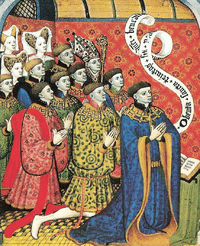 | Ralph de Neville, 4th Baron Neville | September 1397 | October 1397 | 1st Earl of Westmorland from 29 September 1397 |
 | Edward Plantagenet (again) | October 1397 | August 1399 | Duke of Albemarle and Earl of Rutland |
| Sir Thomas de Rempston | October 1399 | Drowned at London Bridge, 31 October 1406 | ||
 | Edward (Plantagenet) (again)[5] | November 1406 | 1413 | now Duke of York, slain at Agincourt, 1415 |
| John Dabrichecourt | 1413 | 1413 | ||
| Robert de Morley | 1413 | 1415 | ||
| William Bourchier | November 1415 | Earl of Eu, 1419, d. 1420 | ||
| Roger Aston | July 1420 | August 1420 | ||
| John Holland, Earl of Huntingdon | August 1420 | Duke of Exeter | ||
| James Fienes, Lord Say | 1447 | July 1450 | Murdered by Jack Cade's mob, 4 July 1450 | |
| Henry Holland, 3rd Duke of Exeter | June 1451 | |||
| William Bourchier, Viscount Bourchier | September 1460 | |||
| John Tiptoft, Earl of Worcester | December 1461 | October 1470 | Executed by Lancastrians, 18 October 1470 | |
| John Sutton, Baron Dudley | 1470 | |||
| Thomas Grey, Marquis of Dorset | April 1483 | in office before accession of Edward V in 1483 | ||
| Sir Robert Brackenbury | July 1483 | Killed at Bosworth Field, 22 August 1485 | ||
| John de Vere, Earl of Oxford | September 1485 | 1513 | ||
| Sir Thomas Lovell | March 1513 | 1524 | ||
| Sir William Kingston | May 1524 | 1540 | ||
 | Sir John Gage | October 1540 | 1553 | |
 | Edward Clinton, 9th Baron Clinton | July 1553 | August 1553 | 1st Earl of Lincoln from 1572 |
 | Sir John Gage (again) | August 1553 | 1556 | |
| Sir Edward Braye | 1556 | 1557 | ||
| Sir Robert Oxenbridge | January 1557 | 1558 | ||
| Peter Carew | 1572 | 1572 | ||
| | Sir Richard Berkeley of Stoke Gifford | 1595 | ||
 | Sir William Wade (Lieutenant)[6] | 1605 | 1611 | |
 | Sir Gervase Helwys (Lieutenant) | 1611 | 1615 | |
| Sir George More (Lieutenant) | 1615 | 1617 | ||
| Sir Allen Apsley (Lieutenant) | 1617 | 1630 | ||
| Sir Thomas Lunsford (Lieutenant) | 1641 | 1641 | served for a few days, per Clarendon | |
 | Francis, Baron Cottington | 1640 | William Balfour was his Lieutenant | |
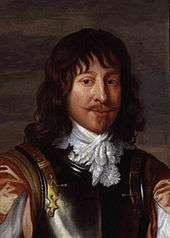 | Mountjoy Blount, 1st Earl of Newport | 1641 | ||
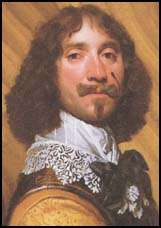 | John Byron, 1st Baron Byron (Lieutenant) | 1641 | 1642 | |
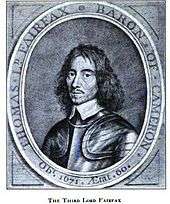 | Sir Thomas Fairfax | August 1647[6] | 1650 | Robert Tichborne was his Lieutenant. |
| Sir John Robinson, 1st Baronet | 1660 | 1675 | ||
 | James Compton, 3rd Earl of Northampton | 1675 | 1679 | |
| William Alington, 3rd Baron Alington | 1679 | 1685 | ||
 | George Legge, 1st Baron Dartmouth | 1685 | 1688 | |
| Robert Lucas, 3rd Baron Lucas | 1688 | 1702 | ||
| Montagu Venables-Bertie, 2nd Earl of Abingdon | 1702 | 1705 | ||
 | Algernon Capell, 2nd Earl of Essex | 1706 | 1710 | |
| Richard Savage, 4th Earl Rivers | 1710 | 1712 | ||
| George Compton, 4th Earl of Northampton | 1712 | 1715 | ||
 | Charles Howard, 3rd Earl of Carlisle | 1715 | 1722 | |
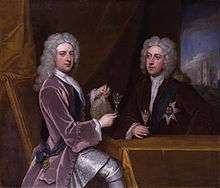 | Henry Clinton, 7th Earl of Lincoln | 1723 | 1725 | |
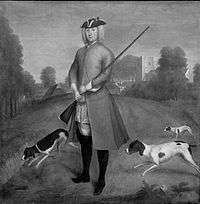 | Charles Paulet, 3rd Duke of Bolton | 1725 | 1726 | |
| Henry Lowther, 3rd Viscount Lonsdale | 1726 | 1731 | ||
| John Sidney, 6th Earl of Leicester | 1731 | 1737 | ||
| Charles Cornwallis, 1st Earl Cornwallis | 1740 | 1762 | ||
| John Berkeley, 5th Baron Berkeley of Stratton | 1762 | 1770 | ||
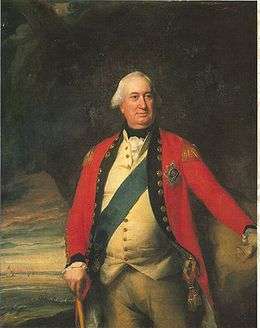 | Charles Cornwallis, 2nd Earl Cornwallis | 1770 | 1784 | |
 | The Lord George Lennox | 1784 | 1784 | |
 | Charles Cornwallis, 2nd Earl Cornwallis | 1784 | 1805 | 1st Marquess Cornwallis from 1792 |
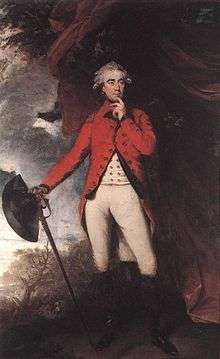 | Francis Rawdon-Hastings, 1st Marquess of Hastings | 1806 | 1826 | |
 | Arthur Wellesley, 1st Duke of Wellington | 1826 | 1852 | |
.jpg) | Stapleton Cotton, 1st Viscount Combermere | 1852 | 1865 | |
 | Sir John Burgoyne, Baronet | 1865 | 1871 | |
.jpg) | Sir George Pollock | 1871 | 1872 | |
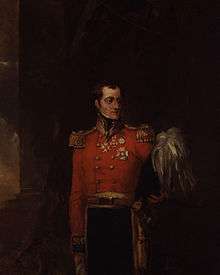 | Sir William Maynard Gomm | 1872 | 1875 | |
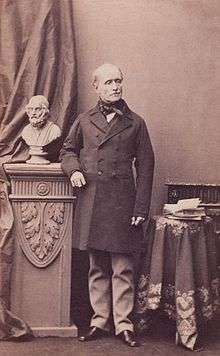 | Sir Charles Yorke | 1875 | 1880 | |
 | Sir William Fenwick Williams | 1881 | 1881 | |
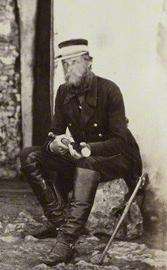 | Sir Richard James Dacres | 1881 | 1886 | |
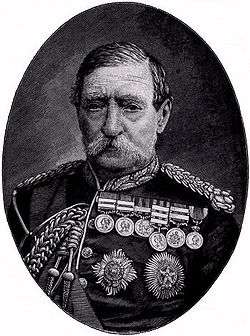 | Robert Napier, 1st Baron Napier of Magdala | 1886 | 1890 | |
 | Sir Daniel Lysons | 1890 | 1898 | |
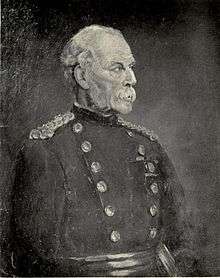 | Sir Frederick Stephenson | 1898 | 1911 | |
 | Sir Henry Evelyn Wood | 1911 | 1919 | |
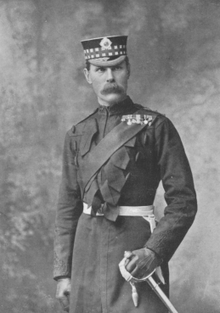 | Paul Methuen, 3rd Baron Methuen | 1920 | 1932 | |
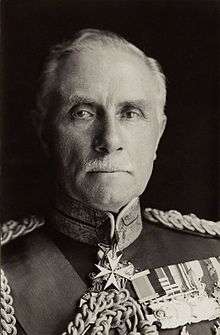 | George Milne, 1st Baron Milne | 1933 | 1938 | |
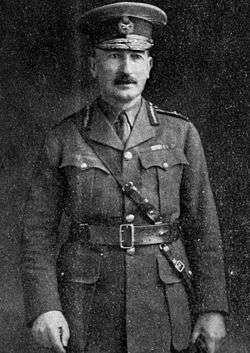 | Sir Claud William Jacob | 1938 | 1943 | |
 | Sir Philip Chetwode, 7th Baronet | 1943 | 1948 | 1st Baron Chetwode from 1945 |
 | Archibald Wavell, 1st Earl Wavell | 1948 | 1950 | |
 | Alan Brooke, 1st Viscount Alanbrooke | 1950 | 1955 | |
 | Henry Maitland Wilson, 1st Baron Wilson | 1955 | 1960 | |
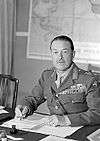 | Harold Alexander, 1st Earl Alexander of Tunis | 1960 | 1965 | |
 | Sir Gerald Walter Robert Templer | 1965 | 1970 | |
| Sir Richard Hull | 1970 | 1975 | ||
| Sir Geoffrey Baker | 1975 | May 1980 | ||
| Sir Peter Hunt | June 1980 | July 1985 | ||
| Sir Roland Gibbs | August 1985 | July 1990 | ||
| Sir John Stanier | August 1990 | July 1996 | ||
| | Peter, The Lord Inge | August 1996 | July 2001 | Baron Inge from 1997 |
| Sir Roger Wheeler | August 2001 | July 2009 | ||
.jpg) | Richard, The Lord Dannatt[3] | August 2009 | July 2016 | |
 | Sir John Nicholas Houghton | 2016 |
Notes
- ↑ The Queen's Regulations for the Army (Ministry of Defence): Chapter 9, Annex B.
- ↑ Ceremony of the Constable's Dues
- 1 2 Dannatt to be next Constable of the Tower of London Ministry of Defence, UK. Defence News, 5 Feb 09. Retrieved 2011-03-02.
- 1 2 "Constables and Lieutenants of the Tower of London" W. L. Rutton, Notes and Queries, 10 S. IX, No. 213, Jan. 25, 1908, pp.62–63
- ↑ "Constables and Lieutenants of the Tower of London" W. L. Rutton, Notes and Queries, 10 S. IX, No. 218, Feb. 29, 1908, pp.161–163
- 1 2 "Constables and Lieutenants of the Tower of London" W. L. Rutton, Notes and Queries, 10 S. IX, No. 222, Mar. 28, 1908, pp.243–246
References
- Leigh Rayment's Peerage Pages
- thepeerage.com — Darryl Lundy
- W. L. Rutton, Notes and Queries, pp.62–63 pp.161–163 pp.243–246 "Constables and Lieutenants of the Tower of London" (3-part article), 10 S. IX, (1908)